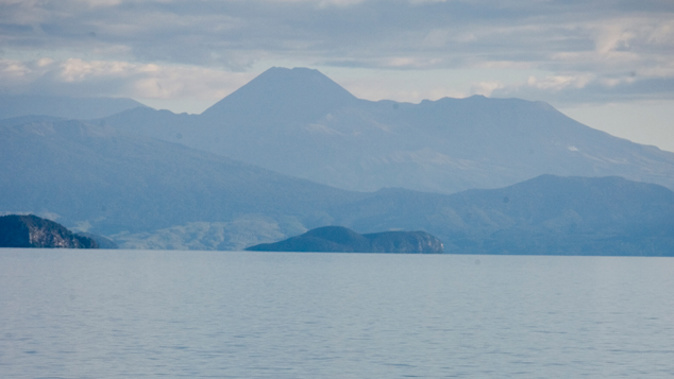
Scientists have re-written the histories of New Zealand eruptions - including the largest in 20,000 years - with new research that also opens up the possibility of predicting big blows decades before they happen.
The new study found that carbon dioxide belched from deep below volcanoes could be resdistributed by groundwater systems, with implications for using radiocarbon-based methods for dating prehistoric events.
It offered fresh evidence that the Taupo eruption - which spewed enough ash into the atmosphere that it would have been visible in Rome and China - took place between 40 and 200 years later than the current estimate of 232AD.
The study - led by University of Canterbury scientists and another graduate now based at the University of Melbourne - suggested eruption dates of volcanoes elsewhere may also be too old.
The current preferred method for eruption dating, dubbed "wiggle match dating", related sequences of dates from tree rings to a record of natural variation in the amount of carbon-14 in the atmosphere through time.
While this could be used to pinpoint when an eruption killed the tree, it still wasn't valid if gas from the volcano was affecting the tree's version of the wiggle.
The researchers re-analysed more than 40 radiocarbon dates on plant remains from beneath and above the volcanic ash layer from the Taupo eruption in the first millennium.
They found that the oldest dates were closest to the volcano vent, and dates became progressively younger the farther away they were.
The geographic pattern suggested that carbon in plants and plant remains such as peat within 60km from the vent give spuriously old dates.
The team found that the ratio of the two stable isotopes of carbon, carbon-13 to carbon-12, in the radiocarbon date samples and in the water of Lake Taupo and the Waikato River were consistent with volcanic carbon dioxide injected into the groundwater from a developing magma body.
This carbon dioxide leaked from the groundwater into the atmosphere, before being taken up by photosynthesising plants.
The carbon in that volcanic carbon dioxide lacked carbon-14, and so diluted that obtained from the atmosphere, making the radiocarbon date measured on the wood appear older than it should be.
The tree wood recorded where the carbon was coming from over decades and centuries, and provided a real timescale for the changes in the rings, study co-author and volcanologist Associate Professor Ben Kennedy said.
"The crucial link between what is happening beneath the volcano and the record in the trees is the groundwater, which conveys the carbon dioxide across the landscape."
If the Taupo date was wrong, he said, "then our current understanding of any association between large eruptions and changes in Earth's climate may need to be re-examined".
Moreover, the study suggested the potential for forecasting future eruptions.
The researchers showed that the radiocarbon dates and isotope data, which underpinned the presently accepted wiggle match age for the eruption, plateaued.
Effectively, the age of the outer ring of the dated tree, which was knocked down and killed by the eruption, had ceased to follow the tree's growth several decades before the eruption.
Study co-author Dr Brendan Duffy said radiocarbon wiggle match date series for other major eruptions, including at Rabaul in Papua New Guinea and Baitoushan on the North Korean border with China, showed similar patterns.
Apart from supporting the Taupo study, and indicating that there may also be problems with the dates of these volcanic eruptions, the similarities implied that measurements of carbon isotopes in 200 to 300 annual rings could track changes in the carbon source used by trees growing near a volcano, providing a potential method of forecasting future large eruptions.
Adjunct Professor Richard Holdaway identified the relationships between radiocarbon ages, carbon isotopic values and eruptions.
"We found that long-term monitoring of the carbon isotopes in trees growing near a volcano can show trends which reveal the state of the magma body beneath," he said.
These could potentially allow long-term forecasting of major eruptions.
"What people will do with a forecast for an event that may occur several decades later is anyone's guess."
Holdaway said the situation wasn't unlike that involving forecasts of future movement on major faults, such as New Zealand's big-threat Alpine Fault.
"The difference is that for an eruption, continued monitoring can refine the forecast whereas predictions of fault movement are statistical, based on estimates of how far fault movements are apart in time and when the fault last moved," he said.
"And, of course, the eruption of super-volcanoes like Yellowstone and Taupo would have global effects that would dwarf the effects of almost any earthquake."
Take your Radio, Podcasts and Music with you









